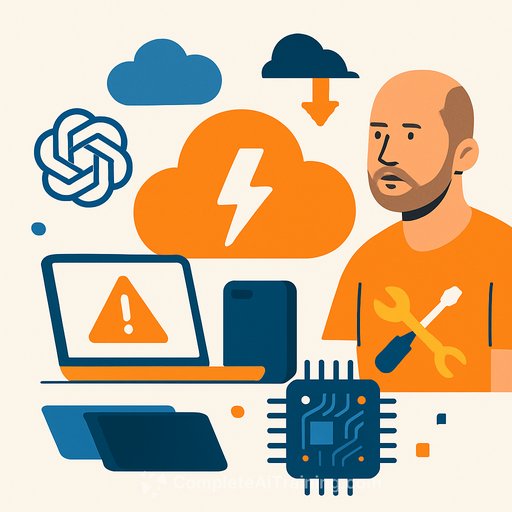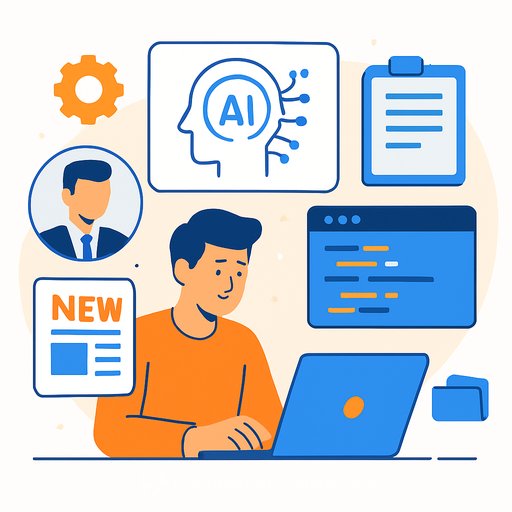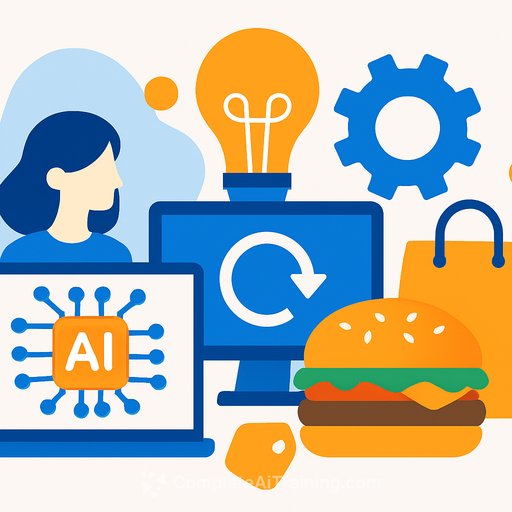OpenAI and Jony Ive hit snags on $500B AI device
OpenAI and Jony Ive are building a palm-sized, screenless assistant that listens, watches, and responds in real time. Think smartphone footprint, a camera or two, mic, and speaker-meant to live on a desk but portable when needed.
The pitch: an "always on" companion that builds memory from ambient context. The reality: software glitches, privacy questions, and a compute bill that doesn't scale-yet.
What they're actually making
Early prototypes exist, informed by the same team that helped ship the iMac, iPod, and iPhone. The device aims to go beyond wake-word speakers by running continuous sensing and multimodal input to form a persistent assistant "memory."
Two unresolved choices sit at the core: the assistant's voice/personality and how often it should proactively speak. It can't be too eager or too passive. As one person briefed on the plans put it, the goal is "a friend who's a computer who isn't your weird AI girlfriend… like Siri but better."
The roadblocks slowing launch
- Compute constraints: "Compute is another huge factor for the delay," said a person close to the effort. Unlike Amazon or Google, OpenAI must still lock down affordable capacity for continuous, multimodal inference at scale.
- Software maturity: Personality tuning, interruption timing, and conversation balance are unfinished. The assistant must chime in when helpful without talking over people-a weakness still visible in ChatGPT today.
- Privacy and consent: An always-listening, always-watching device demands clear opt-ins, on-device filters, visible cues (LED/mute), and transparent memory controls.
- Unit economics: Continuous sensing plus large-model inference risks unsustainable per-user costs unless distilled models, caching, and edge inference are in place.
- Hardware realities: Multi-camera setups, far-field audio, thermal limits, and power management for "always on" behavior introduce tough trade-offs.
- Market proof: Similar bets have stumbled. The Humane AI Pin was scrapped, and the Friend pendant drew "creepy" pushback. This product must clear a higher bar.
- Supply chain: OpenAI is working with contract manufacturers such as Luxshare, with final assembly possibly outside China.
- Team scale-up: The $6.5B acquisition of Ive's firm brought in more than 20 ex-Apple engineers, plus hires from Meta's hardware efforts. Talent is there; integration is the test.
Why this matters for product, IT, and engineering leaders
OpenAI, valued around $500B, is betting that a dedicated device can justify premium usage and tighter product loops. If they crack compute costs, privacy, and conversation quality, the category moves beyond smart speakers into a persistent, useful presence.
For teams building similar systems, use this as a checklist.
Practical takeaways you can apply now
- Model/compute plan first: Lock GPU/accelerator access and forecast per-user inference costs before committing to "always on." Explore distillation, quantization, and adaptive rate limiting.
- Hybrid inference: Run small models locally for wake, object/audio events, and safety; escalate to cloud models for higher reasoning. Cache aggressively and prune context.
- Conversation guardrails: Define "speak-up" rules. Track talk-time ratio, interruption regret, and user-adjustable proactivity. Provide quick controls to mute, pause, or quiet the assistant.
- Memory with control: Separate short-term buffer from long-term memory. Add review screens, time limits, and one-tap delete. Make the device's state visible with clear light/sound cues.
- Privacy by default: On-device redaction and event detection, encrypted transport, local-only modes, and clear data retention policy. Publish a privacy framework before launch.
- Graceful failure: Offline behaviors, degraded responses, and when-to-say-nothing rules. Silence is a feature when confidence is low.
- Hardware UX: Physical mute, glanceable indicators, and tactile controls for trust. Test far-field voice in real rooms, not labs.
- Market proof early: Pilot with constrained cohorts and real households. Optimize based on live misuse, edge cases, and false-positive rates.
What to watch next
- Announcements securing long-term accelerator capacity or unique silicon paths.
- A public stance on personality, proactivity, and how the assistant "decides" to speak.
- Details on memory controls and opt-in flows that pass privacy scrutiny.
- SDKs or partner pilots that show everyday value beyond demos.
- Manufacturing commitments that signal a realistic 2026 window.
Background reporting on early specs has surfaced previously in publications like the Wall Street Journal. The core question remains the same: can an always-on, multimodal assistant be helpful, respectful, and affordable at scale?
If you're upskilling teams on conversational AI, on-device inference, or privacy-by-design, explore focused learning paths by role at Complete AI Training.
Your membership also unlocks:









